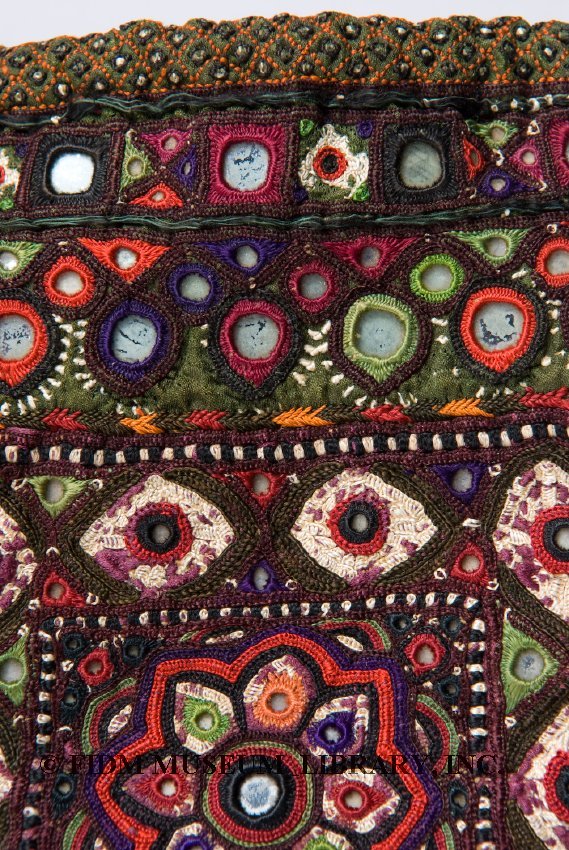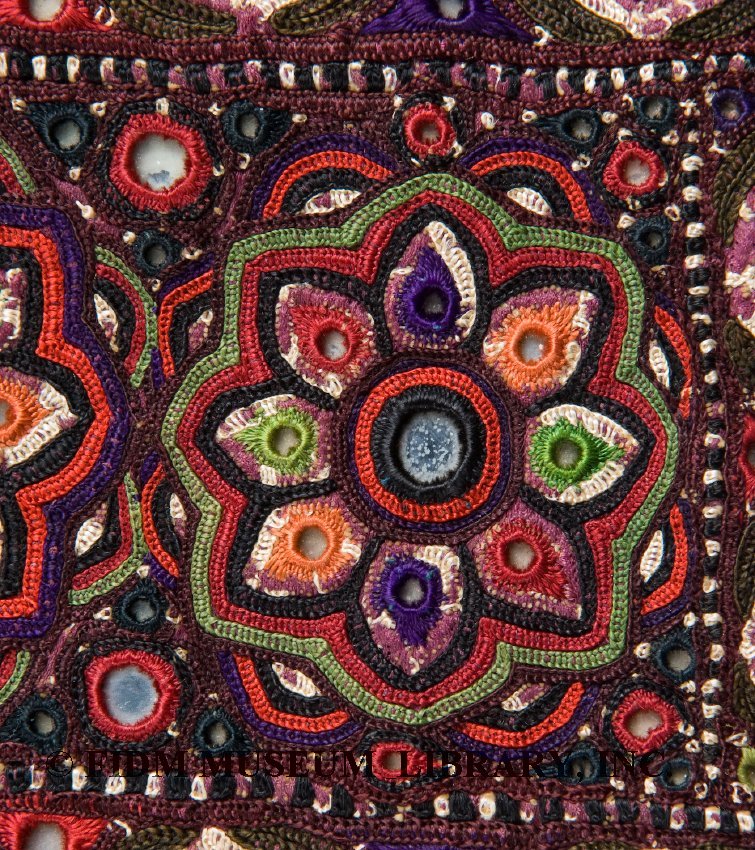Though the focus of the FIDM Museum collection is on objects related to Western European and North American dress, we do have a small number of outstanding objects related to the sartorial traditions of other cultures and countries. Many of these objects, like this kimono dressing gown, have been reimagined or repurposed to suit Western tastes. Today’s object, a small drawstring bag covered with mirrorwork embroidery, is no exception.
 Drawstring bag
Drawstring bag
1900-35
Gift of Carita Kadison
2003.792.3
Still in use today, mirrorwork or shishadar, originated sometime during the 17th century in the region now encompassed by Western India, Pakistan and Afghanistan. Used to embellish garments and textiles which decorate the home, shishadar consists of small, round bits of mirror affixed to a ground fabric with various embroidery stitches. Designs vary depending on area of origin, but often consist of geometric motifs. Shishadar was possibly developed as a relatively inexpensive way to imitate more luxurious and expensive textiles incorporating gold and/or silver. In addition to its visual impact, shishadar is believed to have the added benefit of reflecting the evil eye.
2003.792.3 Detail
As discussed in the Egyptomania post, interest in non-Western sartorial and decorative traditions was widespread in the early years of the 20th century. This particular bag may have been created specifically for the Western market, or it may have been exported to Europe or North America by an enterprising individual. Its shape and embellishment would have been perfectly in fashion anytime in the first decades of the 20th century. Though specific references to mirrorwork are rare, the Los Angeles Times mentioned mirrorwork in 1925, stating that “mirror embroidery is as well liked as ever in evening gowns and elaborate dresses.”1
Mirrorwork is one of many embellishment techniques that enrich textiles with a metallic gleam. Another fascinating Indian technique utilized the wings of a blue and green beetle to bring a hit of color and shine to textiles. Though the FIDM Museum doesn’t have any beetle wing embellished objects in our collection, check out this 19th century textile featuring fantastic bluish-green beetle wings.
1 Gray, Olive. “Of Interest to Women.” Los Angeles Times. 17 Sept. 1925: A6.




The indian technique , in 2 parts of india, kutch embroidery and tribal hampi.
Beetle work is common in India, the technique is used not only in accessories but also full length skirts(lehengas) all covered by embroidery and sometimes it is so fine that the cloth is not visible at all.
It’s amazing just how complicated the detail that these patterns have, especially considering the age of them. Embroidery is one of the oldest techniques still in use today. I have been interested in embroidery my entire life and your blog has been very helpful to me on my quest for knowledge!!!
Have bookmarked you, thanks!